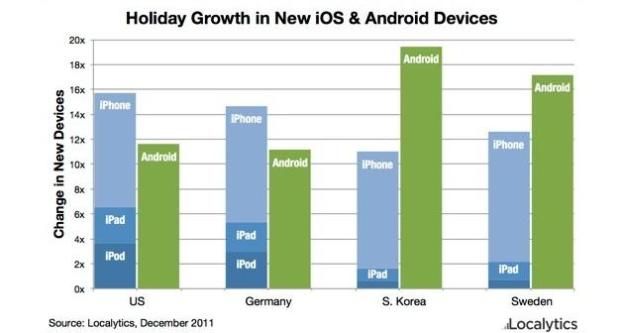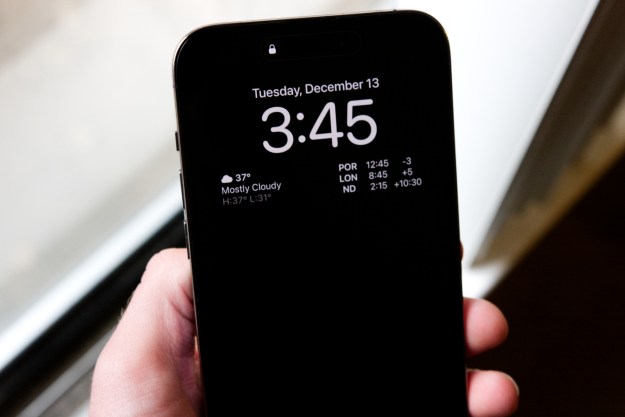
Not long ago, Google revealed that it is activating 700,000 Android devices per day. Well, Christmas has been kind to Android. Andy Rubin, head of Android, Tweeted that 3.7 million Android devices were activated on Dec. 24-25, meaning a lot of people got new phones for Christmas.
iOS Christmas activations may be even higher, at least in the US. According to data released by Flurry, which tracks activations through the 140,000 apps that use its analytics service, 6.8 million new iOS and Android devices were activated on Christmas Day alone, meaning that unless iOS and Android posted incredibly small and disproportionate activation numbers on Christmas Eve, iOS likely posted a lot more activations than Android. Even if Google had 80 percent of its Dec. 24-25 activations on Christmas Day, that means that it only activated about 3 million devices, which would then leave 3.8 million for iOS. It’s likely, however, that Apple’s lead is more substantial. Again though, our data is far from complete.
Localytics reports that growth of combined iPod, iPad, and iPhone activations exceeded Android by a bit, though without actual sales to go by, it’s hard to say if iOS actually out-activated Android or not. In other regions of the world, like Sweden and South Korea (home country of Samsung), Android posted a healthy lead.
Did you get an iPhone or Android device for Christmas? A Kindle Fire counts, you know. What about your friends? It sounds like both companies had a great Christmas to us.
Editors' Recommendations
- Apple just admitted defeat to Android phones
- How to get new emojis on your iPhone or Android device
- How to find downloaded files on an iPhone or Android phone
- Apple and Google are teaming up to make tracking devices less creepy
- The Pixel 7’s best camera trick is coming to the iPhone and all Android phones


